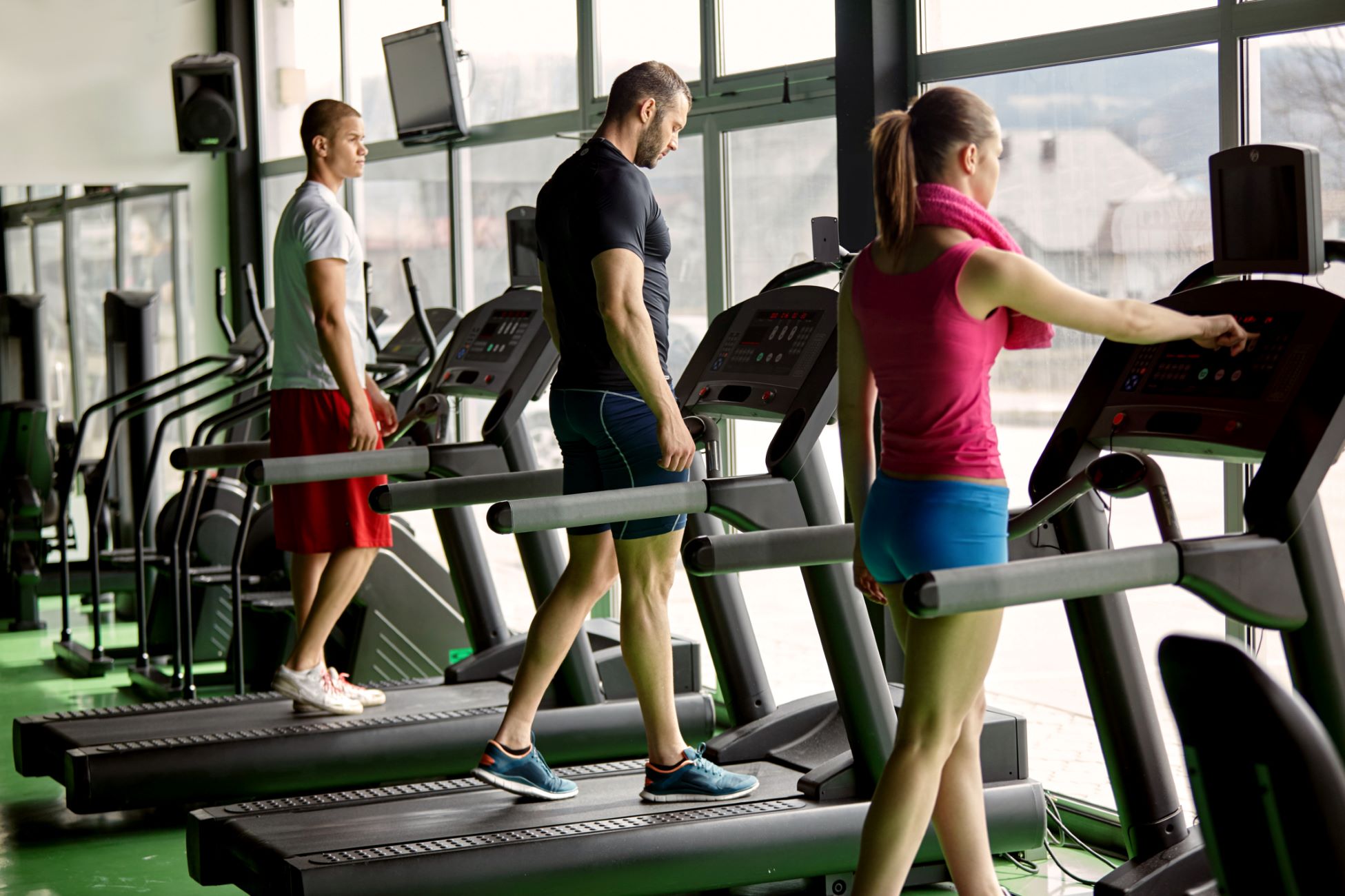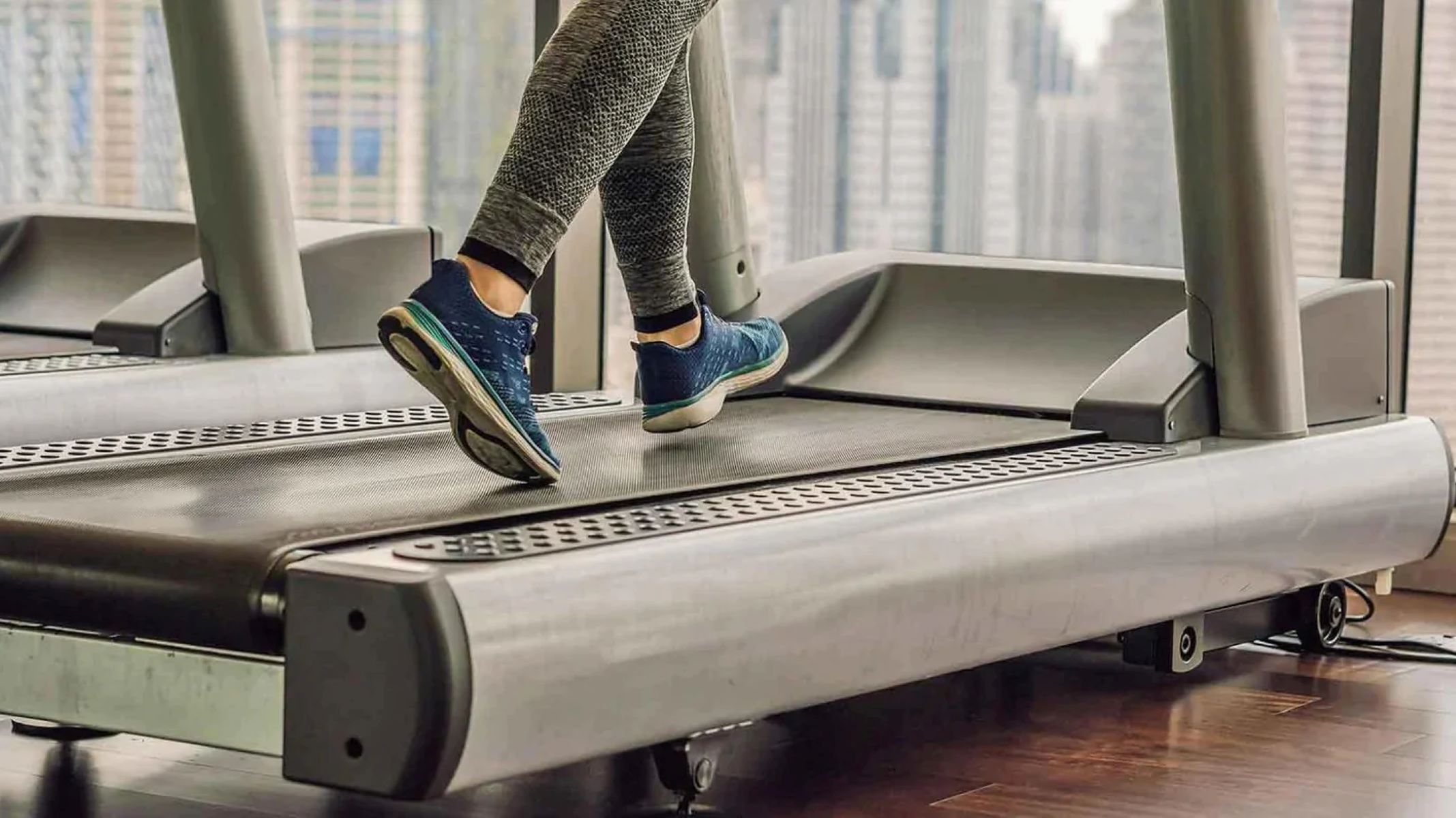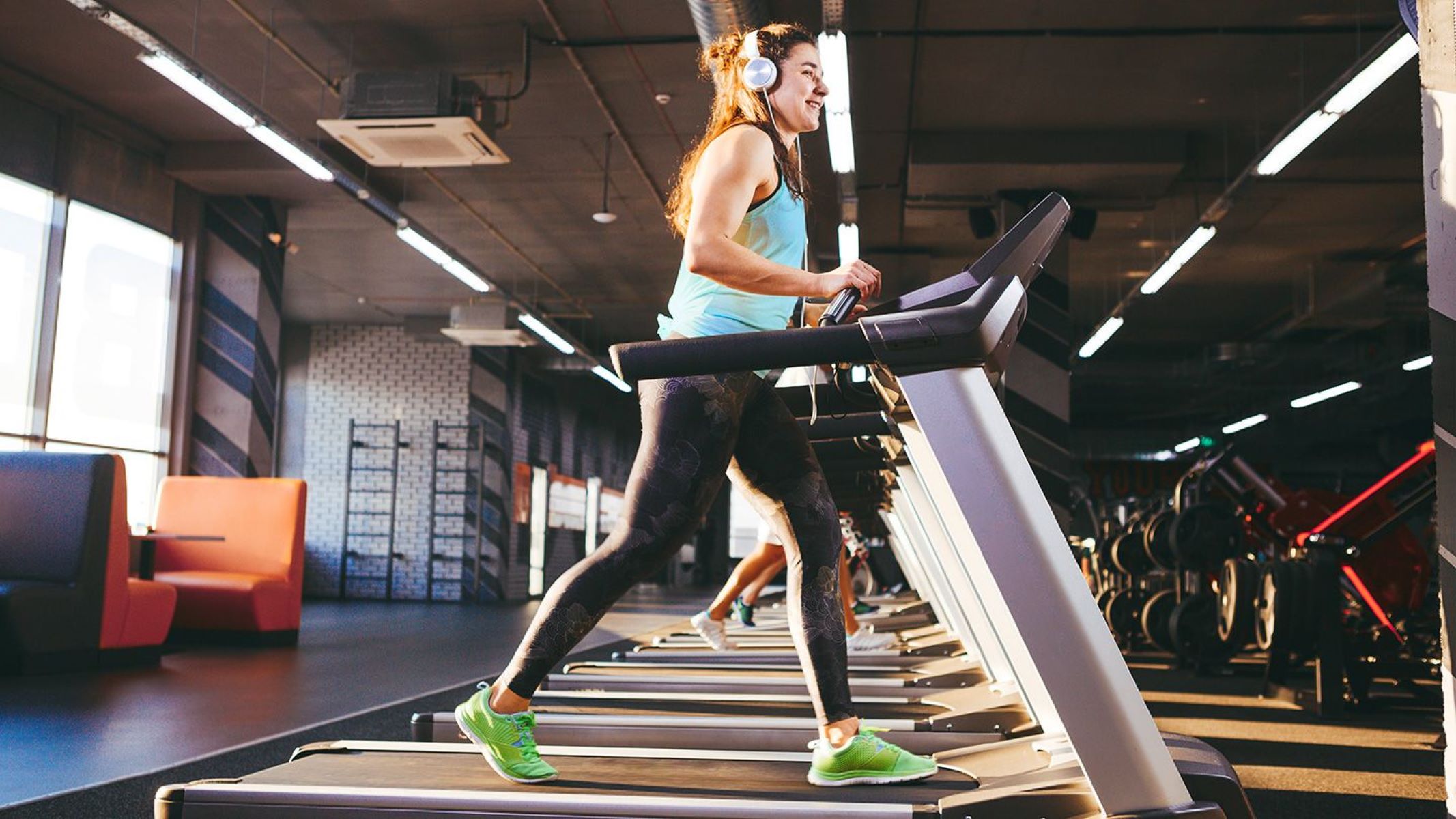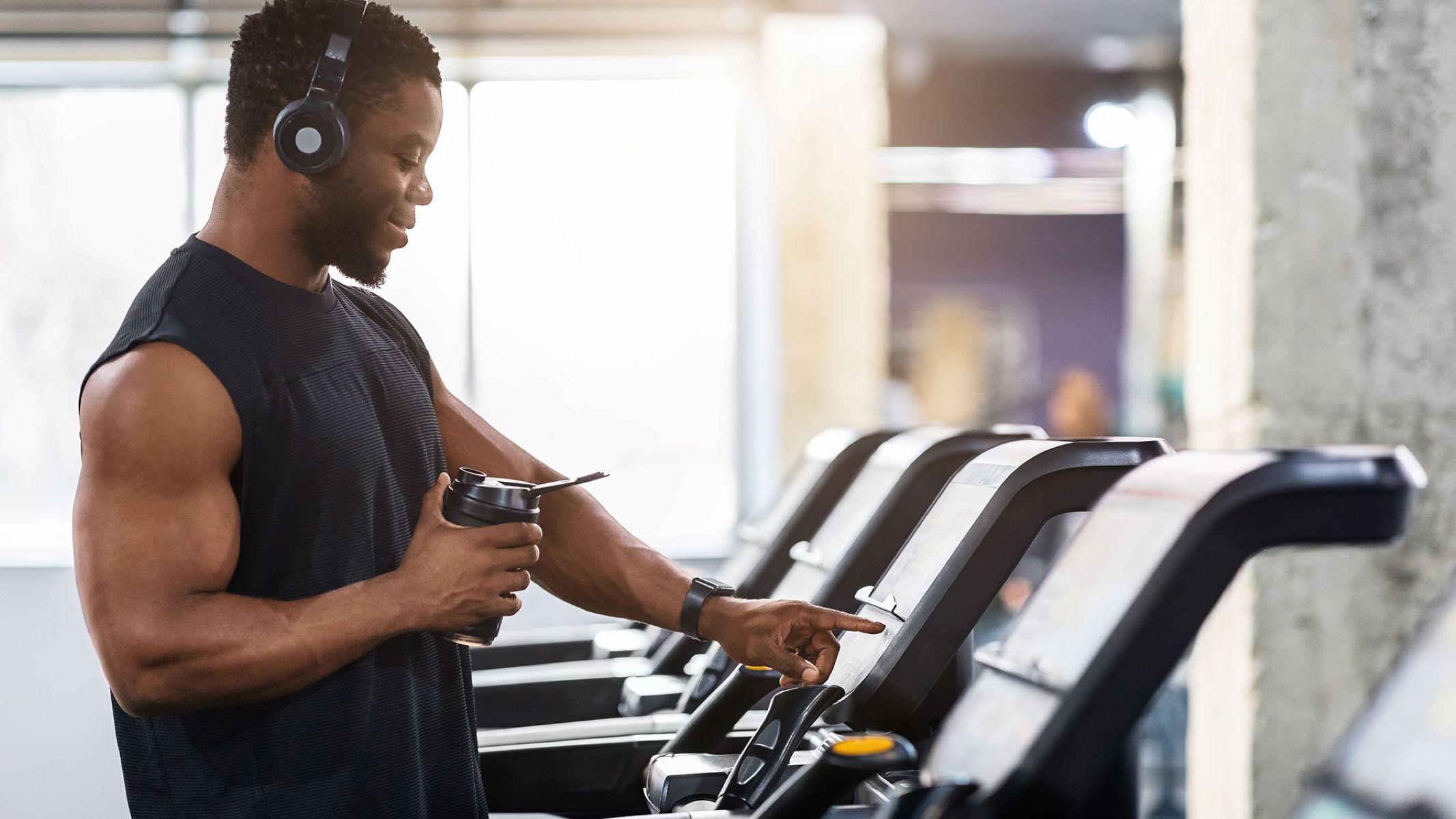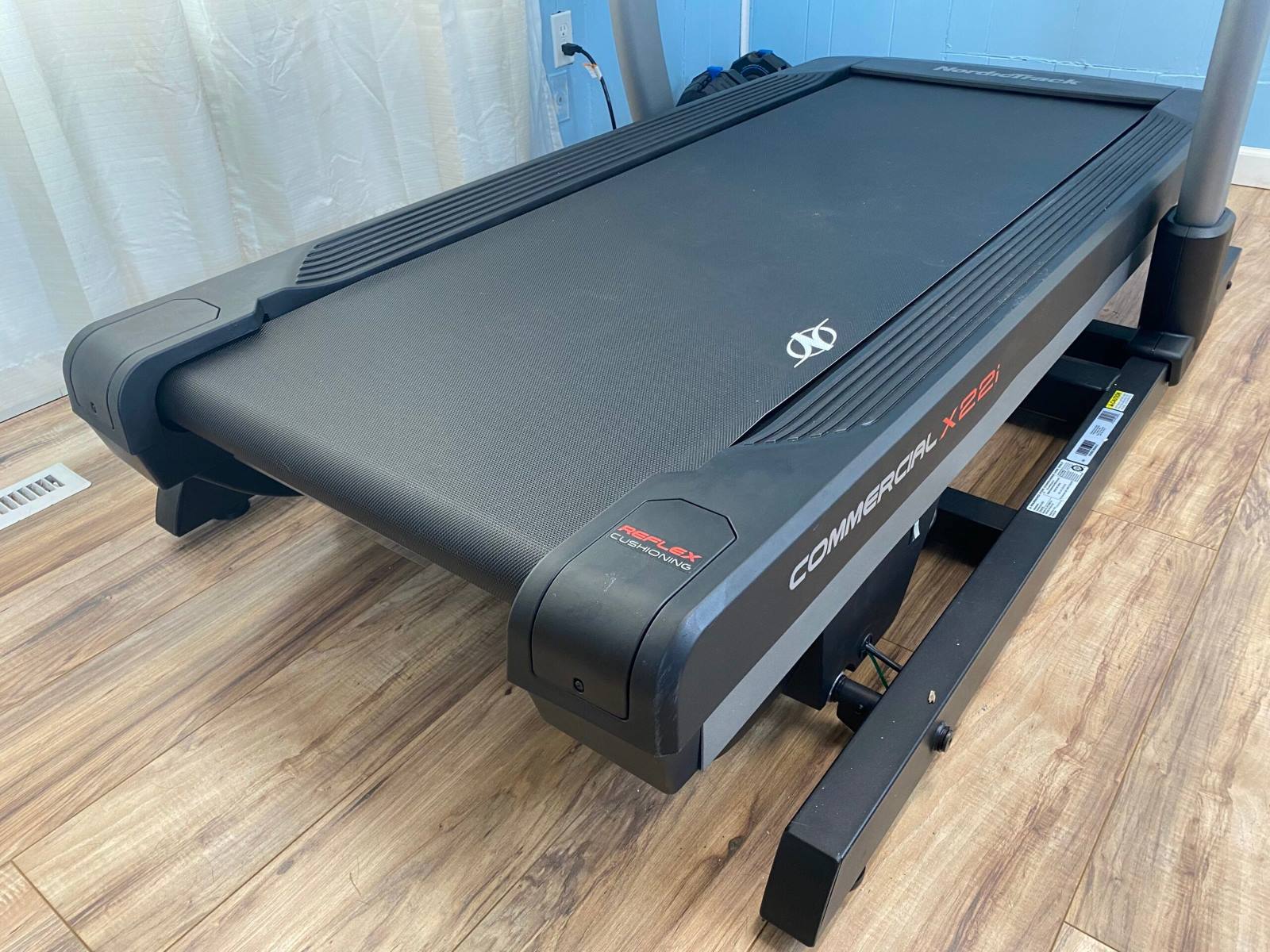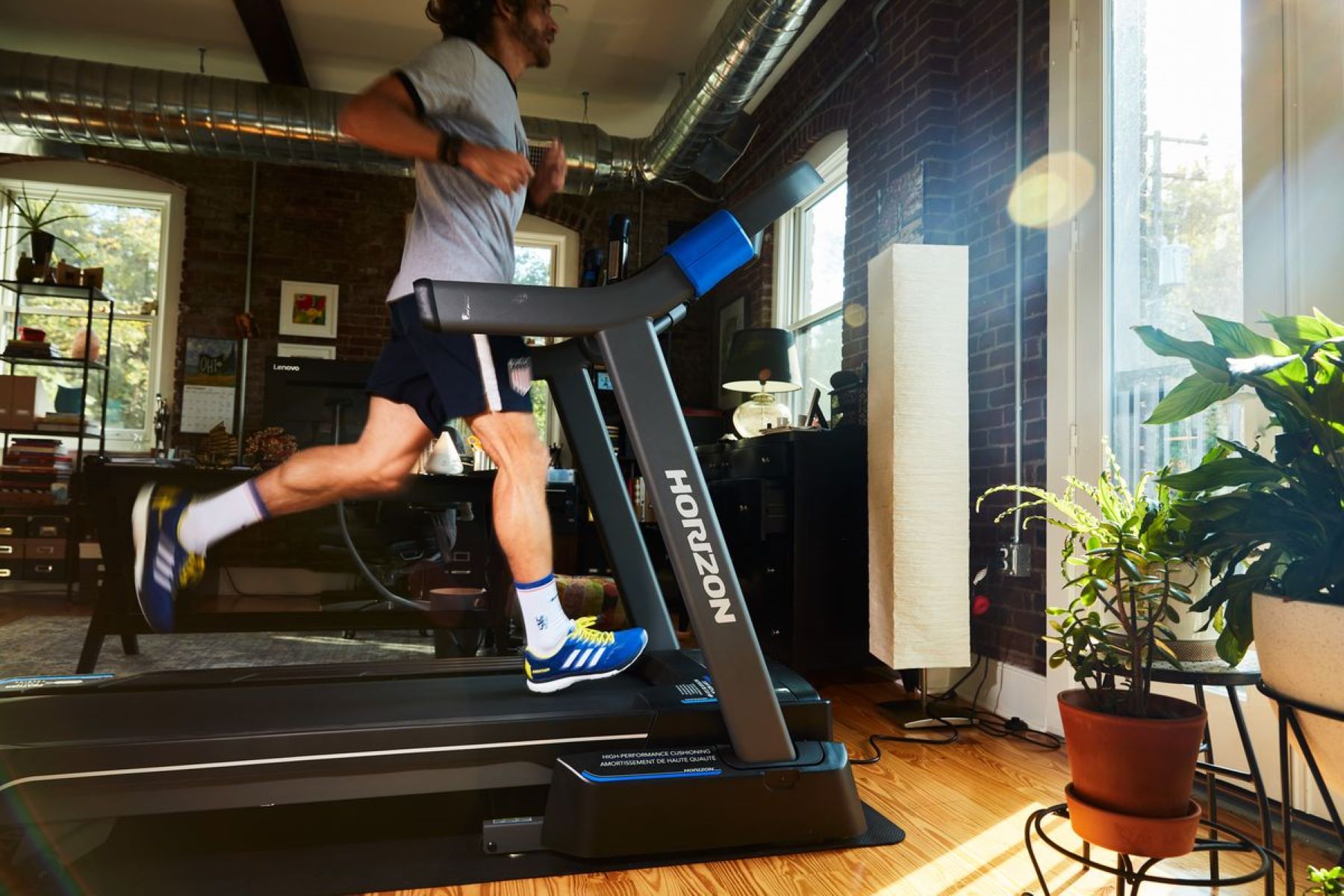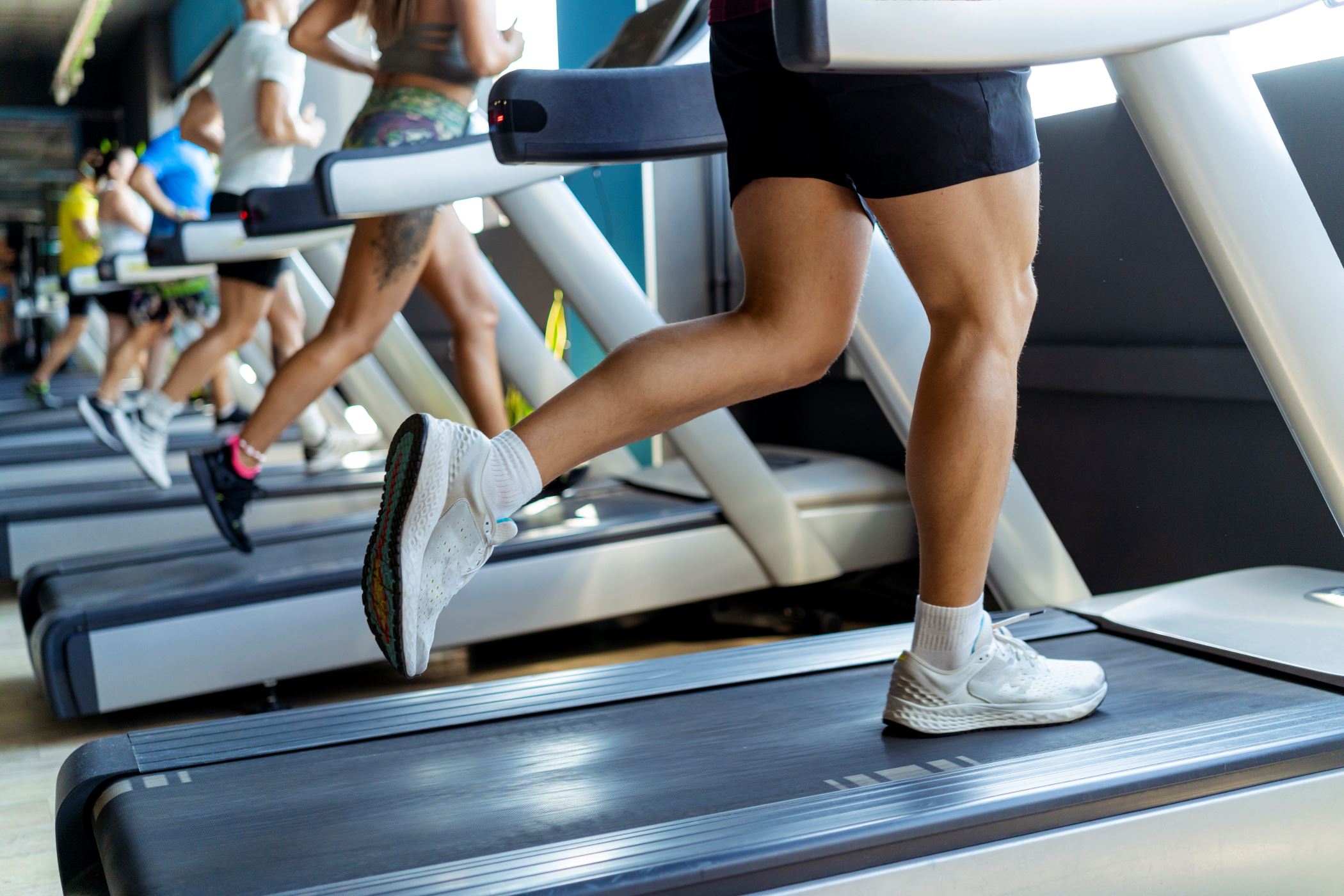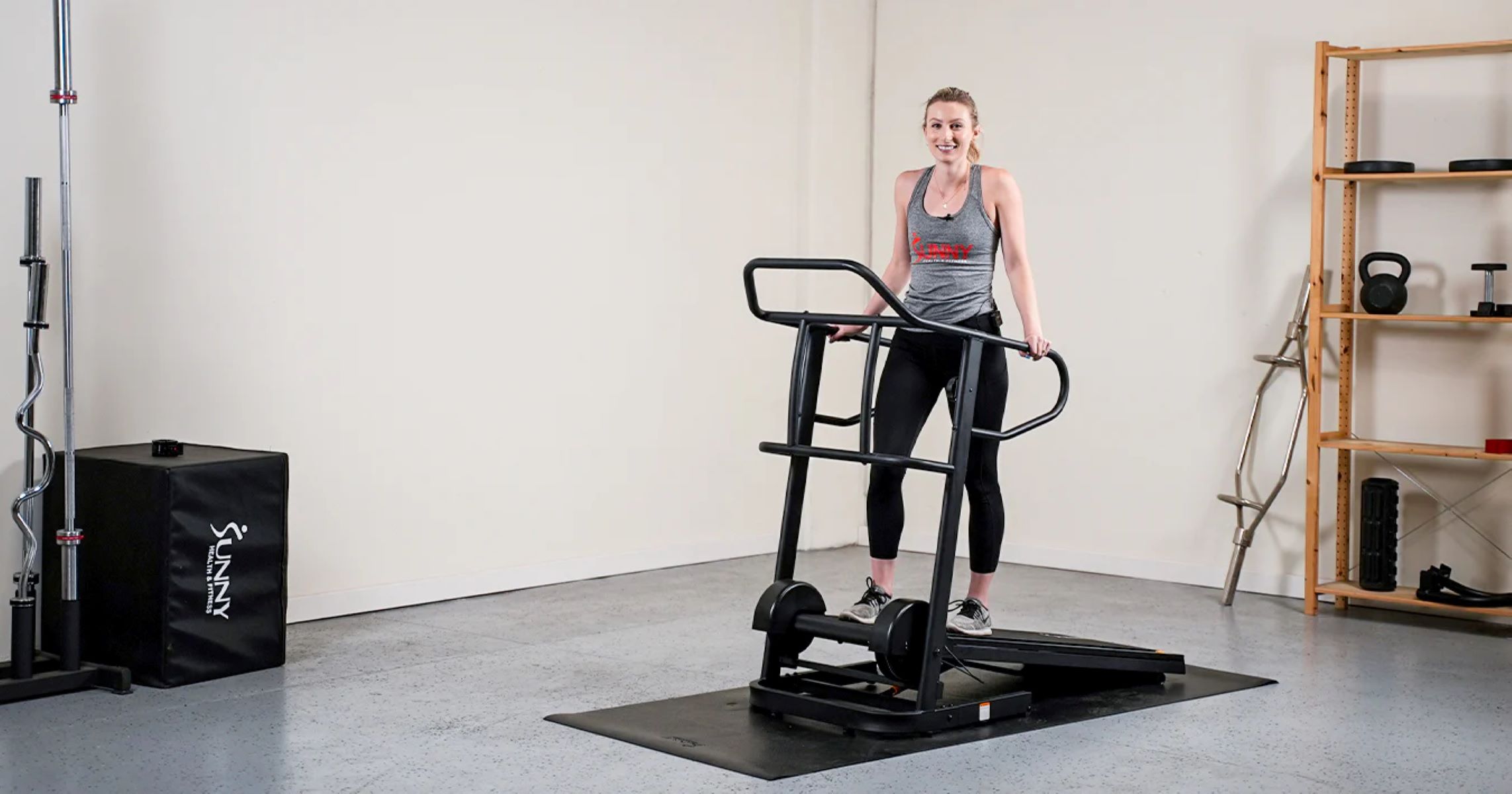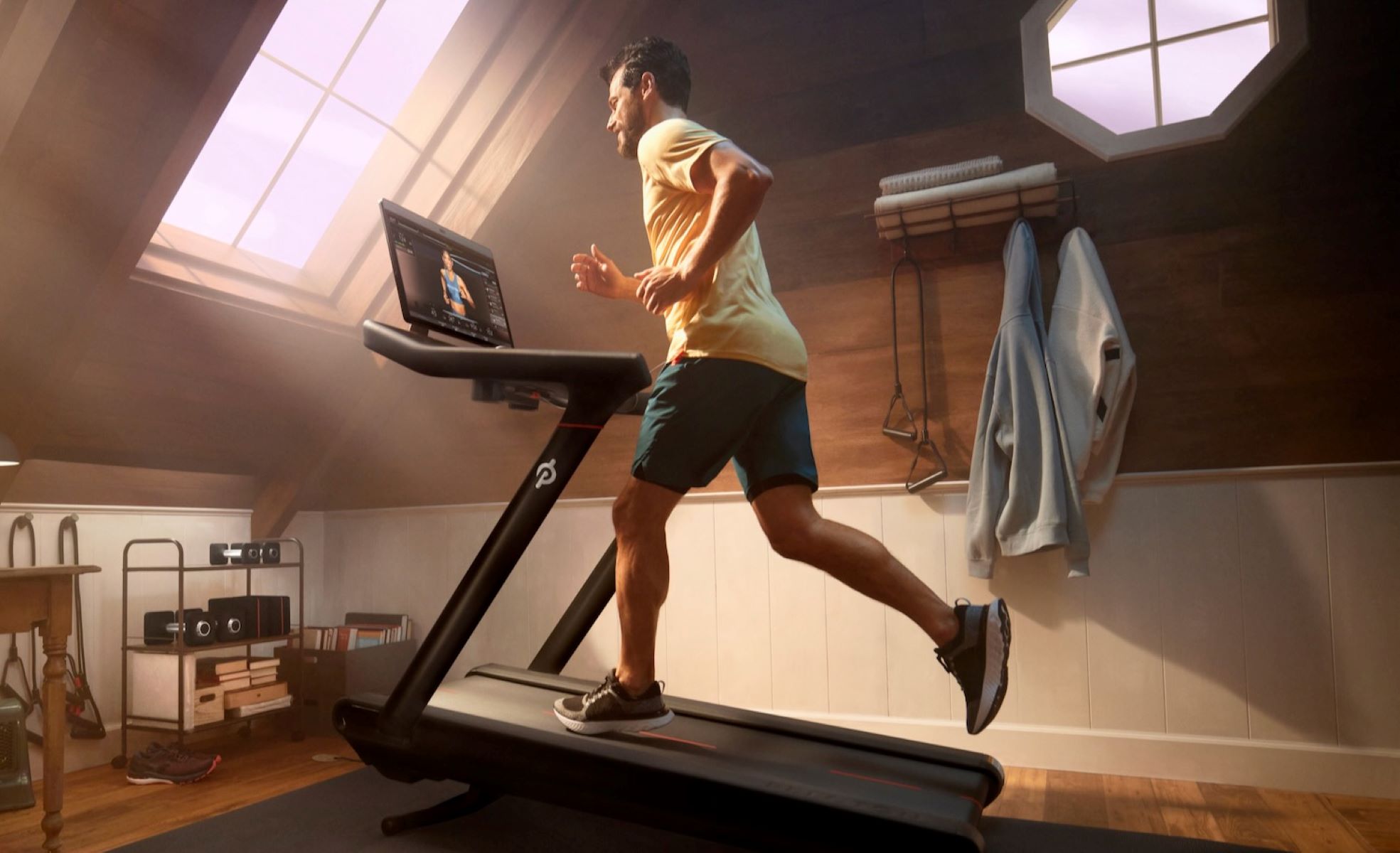

Featured
How To Run Properly On Treadmill
Modified: August 21, 2023
Learn the proper technique for running on a treadmill and maximize your workout with our featured tips and guidance. Start running confidently today!
Introduction
Running on a treadmill is a convenient and effective way to stay fit and improve your cardiovascular endurance. Whether you are a beginner or an experienced runner, learning how to run properly on a treadmill is essential to prevent injuries and get the most out of your workouts.
Running with the correct form and technique can enhance your performance, minimize the risk of strain or stress on your joints, and help you achieve your fitness goals more efficiently. In this article, we will provide you with practical tips and guidance on how to run properly on a treadmill.
Proper running form involves various aspects, including foot placement, stride length, posture, cadence, and breathing technique. It is crucial to pay attention to all these elements to optimize your running experience and avoid any unnecessary setbacks.
Furthermore, choosing the right treadmill and setting it up correctly will ensure a safe and comfortable running environment. Ensuring the treadmill is properly calibrated and positioned will help you get an accurate workout and reduce the risk of injuries.
By following the guidelines and recommendations laid out in this article, you’ll be able to make the most out of your treadmill running sessions and maximize the benefits for your overall health and fitness.
Importance of Proper Running Form
Having proper running form is essential for several reasons. First and foremost, it helps prevent injuries. Running with a poor form can put excessive stress on your joints, leading to overuse injuries such as shin splints, knee pain, or plantar fasciitis. By maintaining proper alignment and technique, you can minimize the risk of these common running injuries.
In addition to injury prevention, proper running form also improves running efficiency. When you run with the correct form, you use your energy more efficiently, reducing wasted movements and decreasing fatigue. This means that you can cover more distance, maintain faster speeds, and improve your overall running performance.
Another benefit of proper running form is that it helps you maintain a balanced and aligned posture. When you run with good posture, you engage the appropriate muscles and distribute the load evenly throughout your body. This not only improves your overall running performance but also reduces the strain on specific muscle groups, decreasing the likelihood of muscle imbalances and related injuries.
Furthermore, running with the correct form enhances your breathing technique. When you maintain an upright posture and engage your core muscles, you create more space for your diaphragm to expand, allowing for deeper and more efficient breathing. This increased oxygen intake helps to fuel your muscles and helps you maintain a steady rhythm during your runs.
Lastly, proper running form contributes to better overall running mechanics. By focusing on your foot placement, stride length, and cadence, you can optimize your running technique. These factors affect your ground contact time, push-off power, and overall speed. By paying attention to these details, you can become a more efficient and powerful runner.
Overall, having proper running form is essential for injury prevention, improved running efficiency, better posture and alignment, enhanced breathing technique, and optimal running mechanics. By incorporating these principles into your treadmill running routine, you can enjoy a more effective and enjoyable workout experience.
Choosing the Right Treadmill
When it comes to running on a treadmill, selecting the right equipment is crucial. Here are some factors to consider when choosing a treadmill:
- Motor Power: Look for a treadmill with a powerful motor that can handle your running speed and intensity. A motor with a higher horsepower (HP) rating will provide a smoother and more consistent workout experience.
- Running Surface: Ensure that the treadmill offers a spacious and comfortable running surface. A wider and longer deck will give you more room to move and reduce the risk of tripping or feeling cramped during your workouts.
- Cushioning System: Consider a treadmill with a shock-absorbing cushioning system. This feature helps reduce the impact on your joints, minimizing the risk of injuries and providing a more comfortable running experience.
- Incline and Speed Options: Look for a treadmill that offers a wide range of incline and speed settings. This feature allows you to vary the intensity of your workouts and simulate different terrains, making your treadmill runs more challenging and engaging.
- Stability and Durability: Ensure that the treadmill is sturdy and well-built. It should be able to withstand your body weight and the impact of your running motion without wobbling or shaking. Quality construction and materials are essential for longevity and reliability.
- Console and Features: Consider the features and functions available on the treadmill’s console. Look for an intuitive and easy-to-use interface with clear readouts of your workout statistics. Additional features such as heart rate monitoring, pre-programmed workout programs, and compatibility with fitness apps can enhance your treadmill experience.
- Budget: Set a budget that suits your needs and research treadmills in that price range. Remember to prioritize quality and features within your budget to ensure you get the best value for your investment.
Before making a purchase, it’s also beneficial to test out different models in person, if possible. Take the time to walk or run on the treadmill to assess its stability, noise level, and overall comfort.
Choosing the right treadmill that meets your specific needs and preferences will enhance your running experience and help you achieve your fitness goals effectively.
Setting Up the Treadmill Correctly
Once you’ve chosen the right treadmill, it’s important to set it up correctly to ensure a safe and effective running experience. Here are some key steps to follow:
- Choose an appropriate location: Find a dedicated space in your home or gym with enough room for the treadmill. Ensure there is sufficient clearance around the machine for safe access and movement.
- Level the treadmill: Use a bubble level to ensure that the treadmill is properly leveled. Uneven surfaces can affect the machine’s stability and may lead to discomfort or injuries during your workouts.
- Plug in the treadmill: Connect the treadmill to a nearby power outlet and ensure that the cord is safely secured to prevent any tripping hazards.
- Check the emergency stop clip: Attach the emergency stop clip to your clothing before starting the treadmill. This clip is designed to stop the machine immediately in case of any accidents or loss of balance.
- Set the incline and speed: Adjust the incline and speed settings according to your preference and fitness level. Start with a comfortable incline and pace, gradually increasing intensity as you become more comfortable and confident.
- Position the console: Adjust the position of the console so that it is within easy reach and at a comfortable height for viewing and accessing the controls.
- Attach safety features: Some treadmills come equipped with safety features such as handrails or safety keys. Ensure these features are properly attached and functioning before starting your workout.
- Keep the area well-lit and ventilated: Make sure the area around the treadmill is well-lit to avoid any accidents or missteps. Additionally, ensure proper ventilation to prevent excess heat buildup during your workouts.
It’s crucial to familiarize yourself with the specific setup instructions provided by the manufacturer. This will ensure that you follow all safety guidelines and make necessary adjustments based on the features and specifications of your treadmill model.
By setting up the treadmill correctly, you’ll create an optimal and safe environment for your workouts, allowing you to fully enjoy the benefits of treadmill running.
Warming Up and Stretching
Before starting your treadmill run, it’s essential to warm up your muscles and prepare your body for exercise. A proper warm-up helps increase blood flow, loosens your muscles, and reduces the risk of injury. Here are some effective warm-up and stretching techniques:
- Dynamic Warm-Up: Begin with light walking or a slow jog on the treadmill for 5-10 minutes. Gradually increase your speed and incline to gently elevate your heart rate and warm up your muscles.
- Dynamic Stretches: Perform dynamic stretches that mimic the movements you will be doing during your run. Examples include leg swings, walking lunges, and arm circles. Perform each stretch for 10-15 repetitions.
- Hips and Glute Activation: Engage your hip and glute muscles with exercises such as hip bridges, lateral leg raises, or clamshells. This will help activate these important muscle groups and improve your running form.
- Leg Swings: Stand next to the treadmill and swing one leg forward and backward, then side to side. Perform 10-15 swings on each leg to loosen up your hips and improve your range of motion.
- Calf and Achilles Stretch: Stand with the balls of your feet on the edge of the treadmill and lower your heels down to stretch your calves. Hold the stretch for 20-30 seconds. Repeat 2-3 times.
- Quad and Hamstring Stretch: Hold onto the handrails of the treadmill for support, bend one knee, and grab your ankle. Gently pull your heel towards your glutes to stretch your quad. Hold for 20-30 seconds and switch sides. Repeat 2-3 times.
- Upper Body Warm-Up: Incorporate arm swings, arm circles, and shoulder rolls to warm up your upper body and improve overall coordination and balance.
It’s important to note that static stretching, where you hold a stretch for an extended period, is best done after your treadmill run or as a separate stretching routine. Save static stretching for post-workout to help improve flexibility and aid in muscle recovery.
By incorporating a proper warm-up and dynamic stretching routine into your treadmill workouts, you’ll prepare your body for the demands of running and optimize your performance while minimizing the risk of injury.
Foot Placement and Stride Length
When it comes to running on a treadmill, paying attention to your foot placement and stride length can greatly impact your running form and overall performance. Here are some tips to optimize your foot placement and stride length:
- Foot Placement: Aim to land mid-foot or slightly towards the front of your foot when running on a treadmill. Avoid striking with your heel as it can lead to jarring impacts and potentially increase the risk of injuries. Landing mid-foot allows for a smoother transition and better shock absorption.
- Stride Length: Finding the right stride length is important for efficient and comfortable running. Most people naturally find their optimal stride length, but here are some guidelines to consider:
- – Avoid overstriding: Taking overly long strides can put unnecessary stress on your joints and increase the risk of injury. Focus on taking shorter, quicker strides to maintain a more efficient and balanced running motion.
- – Don’t understride: Taking strides that are too short can lead to an inefficient running gait and put excessive strain on your muscles. Strive for a comfortable and natural stride length that allows for a smooth and fluid running motion.
- Cadence: Cadence refers to the number of steps you take per minute. Aim for a cadence of around 170-180 steps per minute, which is considered optimal for most runners. Increasing your cadence can help prevent overstriding and promote a more efficient running form.
- Focus on your posture: Maintaining proper posture is essential for optimal foot placement and stride length. Keep your head up, shoulders relaxed, and core engaged. Avoid slouching or leaning forward excessively, as this can throw off your balance and affect your foot strike.
- Listen to your body: Everyone’s running form is unique, so it’s important to listen to your body and make adjustments based on what feels comfortable and efficient for you. Experiment with different foot placements and stride lengths during your treadmill runs to find what works best for you.
Remember, it’s essential to gradually adjust your foot placement and stride length to avoid any sudden changes that could lead to discomfort or injuries. Focus on making small, gradual adjustments over time to allow your body to adapt to the changes.
By paying attention to your foot placement, stride length, and overall running form, you can improve your running efficiency, reduce the risk of injuries, and enhance your overall treadmill running experience.
Posture and Upper Body Alignment
Proper posture and upper body alignment are crucial elements of running form, whether you’re on a treadmill or outdoors. Maintaining good posture not only enhances your running efficiency but also helps prevent injuries and promotes overall body balance. Here are some tips to optimize your posture and upper body alignment while running on a treadmill:
- Head position: Keep your head upright and aligned with your spine. Avoid looking down at the console or the ground, as this can strain your neck and disrupt your overall body alignment. Instead, focus your gaze straight ahead to maintain proper alignment.
- Shoulder position: Relax your shoulders and let them naturally fall away from your ears. Avoid tensing or hunching your shoulders forward, as this can lead to neck and upper back tension. Keep your shoulders squared and level throughout your run.
- Arms and hands: Bend your arms at a 90-degree angle and swing them gently back and forth. Avoid excessive arm movement across your body, as this can affect your balance and energy efficiency. Keep your hands relaxed and avoid clenching your fists.
- Core engagement: Activate your core muscles by gently drawing your belly button in toward your spine. This helps stabilize your torso and maintain proper posture throughout your run. A strong core also improves overall running efficiency and reduces the risk of lower back pain.
- Back alignment: Keep your back straight and avoid leaning forward or backward. Imagine a straight line running from your head to your heels. Engaging your core muscles and maintaining proper running form will help keep your back aligned and reduce the risk of lower back discomfort or injuries.
- Pelvis position: Keep your pelvis in a neutral position, avoiding excessive tilting forward or backward. This allows for optimal alignment of your hips and spine. Engaging your core muscles can help stabilize your pelvis and maintain proper alignment.
By focusing on your posture and upper body alignment during treadmill running, you can improve your overall running efficiency, reduce the risk of muscle imbalances and strain, and optimize your performance. Regularly checking in with your posture while running will help reinforce these habits and ensure that you maintain proper alignment throughout your workouts.
Cadence and Rhythm
Cadence refers to the number of steps you take per minute while running. Having an appropriate cadence and maintaining a consistent rhythm is essential for efficient and injury-free running, both on a treadmill and outdoors. Here are some tips to optimize your cadence and develop a smooth and consistent rhythm:
- Find your ideal cadence: A general guideline for runners is to aim for a cadence of around 170-180 steps per minute. However, everyone’s ideal cadence may vary slightly based on factors such as height, leg length, and running style. Experiment with different cadences to find the one that feels most comfortable and efficient for you.
- Use a metronome: A metronome can be a useful tool to help you establish and maintain your desired cadence. Set the metronome to your desired beats per minute (BPM) and try to match your foot strikes to the beats. Gradually increase the BPM to challenge yourself and improve your cadence over time.
- Focus on quick, light steps: Strive for shorter, quicker steps rather than long, bounding strides. This helps minimize the impact on your joints and muscles and allows for a more efficient running stride. Visualize yourself running lightly and quietly, as if you’re effortlessly gliding over the treadmill belt.
- Engage your core muscles: A strong and engaged core helps stabilize your body and improve your overall running mechanics. By keeping your core muscles activated, you can maintain a more controlled and rhythmic running motion.
- Listen to the rhythm of your breath: Pay attention to the rhythm of your breath as you run. Aim to find a breathing pattern that is in sync with your foot strikes. This can help you establish a steady and consistent rhythm that optimizes your efficiency and endurance.
- Practice with interval training: Incorporate interval training into your treadmill workouts to improve your cadence and rhythm. Alternate between faster intervals with a higher cadence and recovery intervals at a more comfortable pace. This helps train your body to adapt to different speeds and encourages a more consistent running rhythm.
Developing a consistent cadence and rhythm takes time and practice. Start by focusing on it during shorter runs or intervals and gradually incorporate it into longer distances. Regularly monitoring and adjusting your cadence will help improve your running efficiency and reduce the risk of overstriding or other form-related issues.
Remember, finding your optimal cadence may require experimentation and adjustments based on your individual running style and comfort. Embrace the process and remain patient as you work towards developing a smooth and effortless rhythm that suits your unique running form.
Breathing Techniques
Proper breathing techniques are essential for optimizing your performance and endurance while running on a treadmill. Implementing effective breathing techniques can help you maintain a steady flow of oxygen throughout your body, improve your running efficiency, and prevent breathlessness or side stitches. Here are some tips on how to improve your breathing while running:
- Breathe deeply: Inhale deeply through your nose and exhale through your mouth. This allows you to take in more oxygen and release carbon dioxide more efficiently. Focus on breathing from your diaphragm, expanding your belly with each breath, rather than shallow chest breathing.
- Establish a rhythm: Find a breathing pattern that feels natural and comfortable for you. Some runners prefer a 2:2 rhythm, inhaling for two steps and exhaling for two steps. Others may find a 3:2 or 3:3 rhythm more suitable. Experiment with different patterns and choose one that allows you to maintain a steady flow of breath.
- Sync your breathing with your strides: Coordinate your breathing with your foot strikes. This helps establish a rhythmic pattern and can enhance your overall running rhythm. For example, you can inhale for three steps and exhale for three steps, syncing your breath with your running cadence.
- Focus on exhaling fully: It’s important to fully exhale to release stale air from your lungs and make room for fresh oxygen during inhalation. Exhale deeply, getting rid of all the air before taking the next breath. This allows for better oxygen exchange and helps prevent a buildup of carbon dioxide in your system.
- Relax your upper body: Tension in your upper body, such as tight shoulders or a clenched jaw, can restrict your breathing and make it harder to maintain a steady flow of breath during your runs. Stay relaxed and allow your upper body to move freely with each breath.
- Practice controlled breathing: Incorporate focused breathing exercises into your training routine. For example, try inhaling for a count of four, holding your breath for a count of four, and exhaling for a count of four. This helps improve your lung capacity and control your breath during more intense running moments.
- Stay mindful of your breath: Pay attention to your breath as you run. Stay present and be aware of any tension or discomfort in your breathing pattern. If you feel breathless or lightheaded, slow down your pace and focus on slower, deeper breaths until you regain control.
Remember, practice is key when it comes to improving your breathing techniques while running on a treadmill. Incorporate these tips into your training sessions and gradually build your endurance and breath control. As you become more comfortable with your breathing, you’ll notice improved running performance and a greater sense of relaxation during your workouts.
Monitoring Intensity and Progression
Monitoring the intensity of your treadmill workouts and tracking your progression is crucial for achieving your fitness goals and avoiding potential plateaus or overexertion. By keeping a close eye on your intensity level and gradually progressing your workouts, you can optimize your training and make consistent improvements. Here’s how to effectively monitor intensity and progress:
- Perceived exertion: Pay attention to how you feel during your treadmill runs. Use a scale of 1-10 to rate your perceived exertion, with 1 indicating very light effort and 10 indicating maximum effort. Adjust your speed, incline, and duration based on your perceived exertion to maintain a challenging but sustainable intensity level.
- Heart rate monitoring: Use a heart rate monitor to track your heart rate during workouts. This can provide valuable insights into the intensity of your exercise and help you determine if you’re pushing too hard or not enough. Utilize target heart rate zones specific to your fitness level and goals to ensure that you’re training within the appropriate range.
- Interval training: Incorporate interval training into your treadmill workouts to vary the intensity and challenge your cardiovascular system. Alternate between periods of higher intensity (increased speed or incline) and active recovery phases. This method helps improve endurance, boost calorie burn, and enhance overall fitness.
- Workout duration: Gradually increase the duration of your treadmill workouts as your fitness level improves. This progression helps build endurance and allows you to work at a higher intensity over time. Start with shorter sessions and gradually add a few minutes each week or as you feel comfortable.
- Speed and incline progression: Gradually increase the speed and incline of your treadmill runs to challenge your cardiovascular system and improve your running performance. Aim for small increments, such as 0.1 mph increases in speed or slight adjustments in incline, to gradually progress and avoid overexertion.
- Keep a workout log: Maintain a workout journal to track your treadmill sessions and record important details such as duration, intensity, distance covered, and perceived effort level. This log serves as a record of your progress and allows you to identify trends, set goals, and make informed adjustments to your training routine.
- Listen to your body: It’s essential to listen to your body and honor its signals. If you’re feeling excessively fatigued or experiencing pain or discomfort, it may be an indication that you need to adjust your intensity or take a rest day. Push yourself when appropriate, but also allow for proper recovery to avoid overtraining and injury.
Remember, progress is not always linear, and it’s important to prioritize consistency and gradual improvement over time. Adjust your intensity and progression based on your individual fitness level, goals, and any guidance from a qualified fitness professional.
By effectively monitoring your intensity and tracking your progression, you can ensure that your treadmill workouts are challenging, safe, and aligned with your fitness goals. Strive for gradual improvement and enjoy the journey of continual growth and improvement.
Cooling Down and Stretching
After completing a treadmill workout, it’s important to properly cool down and stretch to aid in muscle recovery, reduce post-exercise soreness, and gradually bring your heart rate back to its resting state. Here’s how to effectively cool down and stretch after your treadmill session:
- Cool down with light exercise: Gradually decrease the speed and incline of the treadmill to allow your body to transition from a higher intensity to a lower intensity. Walk or jog at a comfortable pace for 5-10 minutes to gradually bring your heart rate down.
- Deep breathing: Take slow, deep breaths to help calm your body and promote relaxation. Focus on breathing deeply into your diaphragm and exhaling fully to release tension and stress accumulated during the workout.
- Static stretching: Perform static stretches targeting the major muscle groups used during your treadmill run. Hold each stretch for 15-30 seconds without bouncing or forcing the stretch. Focus on stretching your calves, quadriceps, hamstrings, hip flexors, and glutes. Additionally, include stretches for your upper body, such as your shoulders, chest, and back.
- Foam rolling or self-massage: Use a foam roller or a massage tool to work on any tight or sore areas. Roll over your calves, thighs, and glutes, applying gentle pressure to release muscle tension and promote blood flow. You can also use a tennis ball or a massage ball to target specific areas that need extra attention.
- Hydrate and refuel: Drink plenty of water after your workout to rehydrate your body. Consider having a light snack that includes protein and carbohydrates to replenish your energy stores and support muscle recovery.
- Listen to your body: Pay attention to any discomfort or pain during stretching. Stretch to a point of mild tension, but avoid pushing your body into painful positions. If you experience sharp or intense pain, stop stretching and consult a healthcare professional.
Remember that cooling down and stretching after your treadmill workout is essential for promoting flexibility, reducing muscle tightness, and aiding in overall recovery. It can also help prevent muscle imbalances and improve your range of motion over time.
Additionally, cooling down and stretching can be an excellent time to focus on mindfulness and reflect on your workout. Take a few moments to appreciate your effort, set intentions for future workouts, and mentally unwind.
By incorporating a proper cooldown and stretching routine, you can enhance your recovery, prevent muscle imbalances, and optimize your overall treadmill workout experience.
Common Mistakes to Avoid
When running on a treadmill, there are some common mistakes that many individuals make. Being aware of these mistakes and taking steps to avoid them can help improve your treadmill running experience and reduce the risk of injury. Here are some common mistakes to watch out for:
- Starting with a high speed or incline: Avoid the temptation to immediately set the treadmill at a high speed or incline. Start at a comfortable pace and gradually increase the intensity as your body warms up and adjusts to the workout.
- Leaning forward or gripping the handrails: Maintain an upright posture and avoid leaning too far forward or relying heavily on the handrails for support. Leaning forward can strain your back and impact your running form, while gripping the handrails reduces the effectiveness of your workout.
- Overstriding: Taking long strides and overstriding can put excessive stress on your joints and increase the risk of injury. Focus on shorter, quicker strides to maintain a more efficient and balanced running motion.
- Neglecting warm-up and cool-down: Skipping the warm-up and cool-down phases of your treadmill workout can increase the risk of muscle strains and make your body more susceptible to injury. Always take the time to properly warm up and cool down before and after your runs.
- Ignoring hydration: It’s essential to stay hydrated during your treadmill workouts. Ignoring hydration can negatively affect your performance and increase the risk of dizziness, fatigue, and muscle cramps. Drink water before, during, and after your runs to maintain proper fluid balance.
- Not engaging core muscles: Failing to engage your core muscles can result in poor posture and reduce the efficiency of your running form. Focus on activating your core by gently drawing your belly button toward your spine throughout your run.
- Ignoring pain or discomfort: Pushing through pain or discomfort during your treadmill runs is not advisable. It’s important to listen to your body and address any pain or discomfort promptly. If you experience persistent pain, seek medical advice to diagnose and treat any potential injuries.
- Sticking to the same routine: Avoid falling into a monotonous routine by varying your treadmill workouts. Incorporate different speed intervals, incline levels, or workout programs to challenge your body and prevent plateauing. Keep your workouts interesting and engaging to stay motivated.
By being mindful of these common mistakes, you can make the most out of your treadmill running sessions and reduce the likelihood of injuries or setbacks. Remember to listen to your body, maintain proper form, and gradually progress your workouts to safely and effectively achieve your fitness goals.
Conclusion
Running on a treadmill provides a convenient and effective way to stay fit, improve cardiovascular endurance, and achieve your fitness goals. By implementing proper running form, choosing the right treadmill, and incorporating essential techniques, you can enhance your treadmill running experience and optimize your results.
Start by focusing on your posture, foot placement, and stride length to ensure a balanced and efficient running form. Engage your core muscles, maintain good upper body alignment, and establish a consistent cadence and rhythm. By paying attention to these aspects, you can reduce the risk of injury and improve your overall running performance.
Make sure to choose a treadmill that suits your needs, considering factors like motor power, running surface, stability, and features. Setting up the treadmill correctly and creating a comfortable environment is vital for safe and effective workouts.
Prior to your treadmill run, warm up your muscles and perform dynamic stretches to prepare your body for the exercise ahead. Pay attention to your breathing techniques, focusing on deep inhalation and complete exhalation to enhance your oxygen intake and improve endurance.
Monitoring the intensity of your workouts and properly tracking your progression are key to achieving your fitness goals. Gradually increase the duration, speed, and incline of your treadmill runs to challenge your cardiovascular system and promote continual improvement. Remember to listen to your body and allow for proper recovery to prevent overtraining and injuries.
After each treadmill session, take time to cool down by gradually reducing the intensity and do static stretches to promote flexibility and aid in muscle recovery. Stay hydrated and refuel your body with water and post-workout snacks to replenish energy stores.
Avoid common mistakes such as overstriding, neglecting warm-up and cool-down, and ignoring pain or discomfort. By being mindful of these mistakes, you can minimize the risk of injuries and maintain a more effective and enjoyable workout routine.
Incorporate these guidelines into your treadmill running regimen and observe how they positively impact your performance, endurance, and overall well-being. With proper technique, consistency, and progression, you can make the most out of every treadmill run and achieve your fitness goals.
